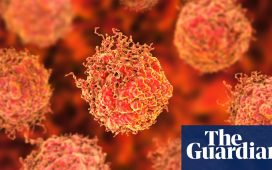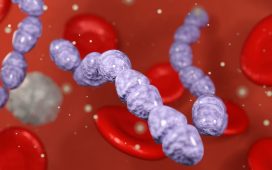When we think of the effects of age on baby-making, we tend to focus on women. That withering supply of eggs. Those chromosomal problems. Infertility. But men are affected by age too. There is now a substantial – and growing – body of evidence that suggests delaying fatherhood may carry its own consequences. These are seldom talked about – how often, for example, are men told to “pay more attention” to their biological clocks?
Nor, generally, are fertility services discouraged for older men wanting to be fathers in the way some countries do for older women who want to be mothers. In England and Wales, for example, the National Institute for Clinical Excellence recommends that the NHS does not offer IVF to women over 42, but no mention is made of paternal age in its guidance. Nor is there an agreed definition of “old” when it comes to fathers.
Yet we know that some time about the age of 40, men’s sperm start to get slower. Conception gets harder. And children born to older fathers face higher rates of conditions such as autism, schizophrenia and leukaemia.
In many countries, men are becoming fathers at older ages. In America, for example, in 1980 about 43 in 1,000 babies were born to men aged between 35-49; by 2015 this had jumped to about 69 in 1,000 babies.
Age affects the sperm itself. A large systematic review published in 2015, looking at 90 separate studies involving 93,839 subjects, found that a man’s age negatively affected measures of sperm quality – the way sperm looked, how well they moved, and how many were damaged.
The physical attributes of the sperm can be important when it comes to conceiving a child. Research suggests conception rates for older men are lower than for younger men. In a study of 2,112 UK couples, men over 45 were nearly five times more likely to take more than a year to conceive compared with men aged under 25, and this held true even when the female partner was young.
In vitro fertilisation (IVF) outcomes for older men also appear worse. A paper this year in the Journal of Assisted Reproduction and Genetics examined findings from 11 studies and 10,527 egg donation cycles – egg donors tend to be young – and found that increasing male age was associated with a slight decrease in live birthrate.
Conceptions from older men are also more likely to end in miscarriage or stillbirth. And those babies born to older fathers are more likely than those conceived by younger men to be born preterm (between 32 and 37 weeks of pregnancy) or very preterm (between 28 and 32 weeks of pregnancy).
“People assume that if there is a sperm that swims and can penetrate an egg, everything is fine,” says Bernard Robaire, a professor at McGill University in Montreal who specialises in the ageing of the male reproductive system, “but that’s not the case.” And it’s not just the general public that hasn’t twigged. Robaire says that last year he gave a presentation on the topic to physicians specialising in obstetrics and gynaecology. Many were unaware of the link between male age and poor reproductive outcomes.
In a review paper published last year in Frontiers of Endocrinology, Robaire and his McGill colleague Peter Chan also underscored numerous epidemiological studies that have linked older fatherhood to health problems in their children.
Older fathers are more likely, for instance, to have children with birth defects such as cleft lip or a hole in the diaphragm, and the odds increase with each year of paternal age. Some cancers also become more common. A birth registry study of nearly 2 million children in Denmark found that a certain kind of childhood leukaemia increases in likelihood by 13% for every five years older the father is. The risk of brain cancer and breast cancer are also elevated in people born to older fathers.
There are also neurological effects. Children with fathers who are more than 40 at their birth are almost six times more likely to have autism than those whose fathers are less than 30, according to one study. Babies born to fathers aged over 50 face an up to fivefold increased risk of schizophrenia. Obsessive compulsive disorder, ADHD, bipolar disorder – all are more likely, research indicates, if the father is older.

But how can this be, you may ask, with more and more older fathers in the news? Didn’t Mick Jagger have a child at 73, Robert De Niro at 79 and Al Pacino at 83? Aren’t sperm made fresh every 74 days or so? Don’t male humans just never run out of the stuff? Yes, yes, and yes.
Much is made of the fact that a woman is born with all the eggs she will ever have; that by her mid-30s they start to spoil, and before you know it, she has run out. At about the age of 50 or so, a woman faces a full shutdown of her reproductive capability. Not so for males, who are able to reproduce pretty much until the end of their lives. But research now shows that the longer the sperm factory operates, the more likely it is that glitches will be introduced during the manufacturing process.
The raw material for sperm are spermatogonial stem cells in the testes. As part of the sperm production process, these immature cells continuously replenish themselves through cell division. Only about half of the new cells will set off on the journey to become new sperm, while the other half will remain to maintain the spermatogonial stem cell pool.
But replication involves copying the entire genome, which is about 3bn letters long. Though rare, sometimes a copying error is made. And if that happens, the sperm that will later arise from that spermatogonial stem cell will forever carry that mutation.
The older a man is, the more times his spermatogonial stem cells will have been replicated. It has been estimated that the sperm produced by a 25-year-old will have undergone 350 replications, whereas the sperm of a 45-year-old will have had 750. Each replication creates more opportunity for a mistake. Which means the children of older men are likely to have more genetic mutations than those born to younger ones.
We are all born with new mutations – about 60 on average. But people born to older fathers have more. In fact, researchers who have sequenced whole genomes or whole exomes (specific parts of genomes) of mother-father-child trios have found that the number of new mutations in children increases steadily with paternal age – about one to two additional mutations for every year older the father is at the time of the child’s birth.
And since we can deduce which chromosome comes from which parent, we know that about 80% of these “de novo” mutations come from the father, whether younger or older.
The good news is that most of the acquired mutations are harmless. “The vast majority of these mutations will have no effect, because they will occur in a part of the genome that is not coding,” says Anne Goriely, professor of human genetics at the University of Oxford. But some will have effects, she says, and although they are rare, they are important contributors to genetic disease. They affect about one in every 300 live births, she noted in a review paper with her colleague, Katherine Wood, in Fertility and Sterility last year.

Goriely’s own interest is in a small subset of these disorders, known as “paternal age effect disorders”, long associated with older fathers. They include conditions such as achondroplasia, which causes dwarfism, and Apert syndrome, which leads to a misshapen skull and fused fingers and toes. Unlike many conditions caused by de novo mutations, however, these paternal age effect disorders do not show just a linear increase with age, but rise sharply in prevalence as the father’s age goes up – occurring much more frequently than you would expect by chance.
But de novo mutations alone may not explain the higher frequency of complex conditions such as autism and schizophrenia that we see in people born to older fathers.
Could modification of epigenetic marks play a role? “What’s passed on to a child is not simply the sequence of [DNA] bases,” says Robaire, who is studying epigenetic alterations in sperm from older men, “but a bunch of other messages that are included to allow some genes to be turned on or not to be turned off.” These messages, or epigenetic marks, control the expression of genes. The very act of living, says Robaire, exposes a man to stresses, toxins, chemicals and experiences that will modify the epigenetic marks on his spermatogonial stem cells. Those modified marks will be copied to any sperm produced from them.
In 2020, Robaire and his colleagues published a paper in Clinical Epigenetics showing that there are age-dependent alterations in the epigenetic marks found on DNA in human sperm. He says you can look at the patterns of epigenetic marks and “predict a man’s age within two years”.
The researchers had expected to find that the epigenetic changes were related to sperm development, but they weren’t. Intriguingly, the places that showed the most epigenetic age-related change were sites associated with neurodevelopment. “Why those sites are selectively affected, I have no idea,” says Robaire.
Men produce a huge number of sperm – about 2,000 with every heartbeat, he says. That’s several million a day. “It’s an amazing machine to be able to produce that many cells.”
But problems pile up as a man gets older. Stem cells acquire more mutations. Epigenetic marks get modified. Experiences in the man’s life, including environmental exposures, cause oxidative stress and damage. These things, and more, may act in concert to cause the effects researchers are seeing in children born to older fathers.
What’s clear is that paternal age matters – and that more men are becoming older fathers. As Robaire and Chan write, a number of factors including delayed marriages, second marriages, assisted reproduction, treatments such as Viagra for erectile dysfunction, and celebrity men modelling older fatherhood “have provided elements for a perfect storm”.











